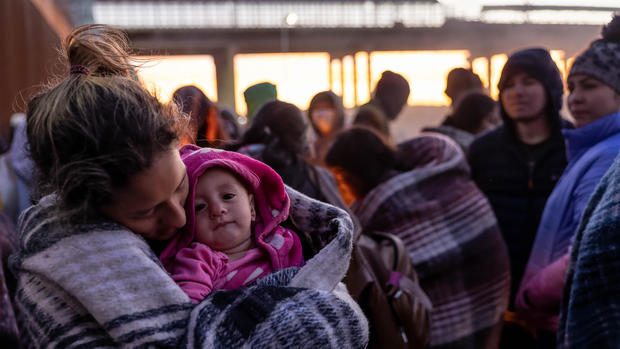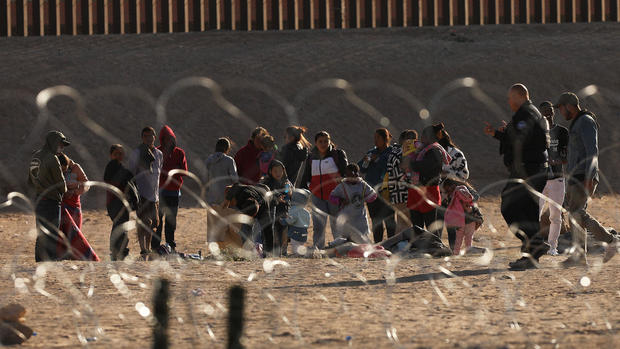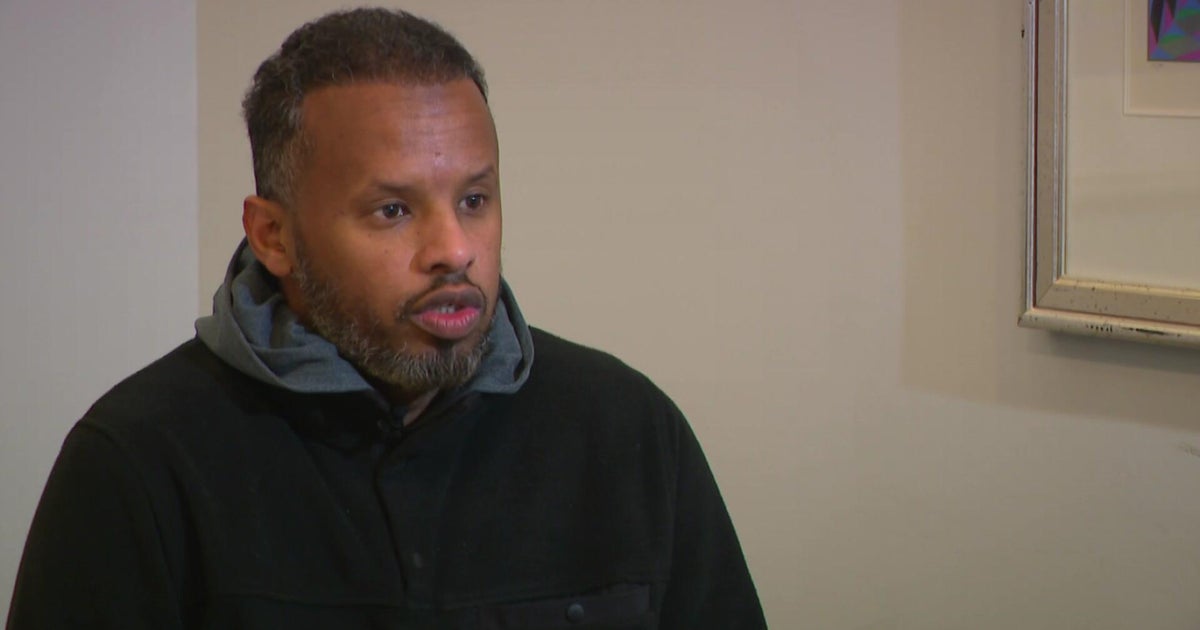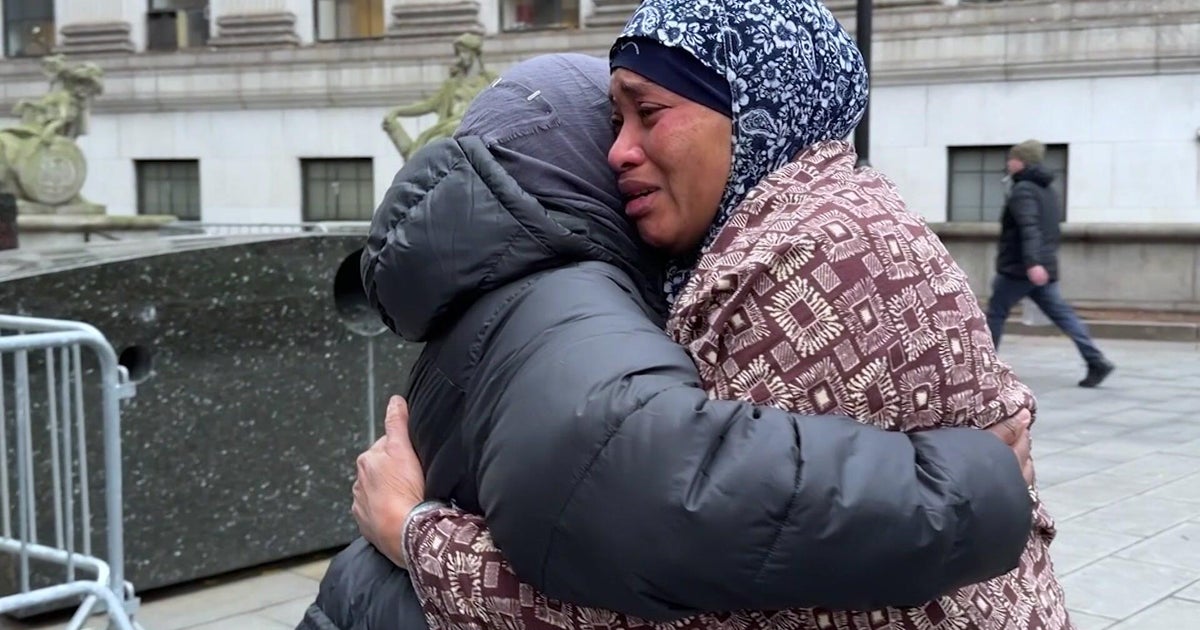America and immigration: How did we get where we are today?
On the day we celebrate moms in this country, there are thousands of mothers, and children, living like this on both sides of America's southern border:
The COVID-era law that effectively allowed both the Trump and Biden administrations to expel migrants back into Mexico before they could ask for asylum is no more; it expired. In its place, the Biden administration has imposed more restrictions on those seeking asylum, but it's only a footnote to the larger border law that was designed for the Cold War, and in no way fits the misery of this moment.
- Why did Title 42 end, and what's happening at the border?
- Title 42's end sparks fear and confusion along the U.S.-Mexico border
"U.S. refugee policy in the 1950s and 1960s was for Europeans," said Yael Schacher, a historian and director of Refugees International. "Remember, this was a time when a refugee was primarily defined as somebody who was fleeing Communism."
Our immigration policies have almost always been tied to the times, if not behind them. Schacher said up until the Civil War we didn't even have a federal immigration policy; it was all left to the states.
"On the East Coast in New York and Massachusetts there was actually quite a bit of anti-Irish sentiment," said Schacher. "And on the West Coast starting in the 1850s and the 1860s, especially in California, you start to see the anti-Chinese sentiment."
In 1882 Congress passed the Chinese Exclusion Act; it was the first time we'd made any significant rule to exclude anyone. That aside, though, we were still largely open. Only about two percent of those who began arriving at Ellis Island were turned away.
But by the 1920s Americans began to worry that those emigrating from southern and eastern Europe were putting a strain on social services, which led the U.S. to clamp down on the number of Catholic and Jewish immigrants.
- The painful history of anti-Asian hate crimes in America ("Sunday Morning")
- Remembering the dark side of Ellis Island ("Sunday Morning")
"So they said, "Okay, we're gonna give Germany and England very large quotas to come in, but from Italy, Poland, Greece, fewer numbers," said Schacher. "They devised a quota system that discriminated against nationality in that way."
The xenophobic quotas had an immediate impact: America rebuffed almost everyone trying to flee Nazi atrocities, for example.
- America's failures in response to the Holocaust ("Sunday Morning")
- 1939 letter found, plea to FDR to save Jewish kids ("60 Minutes")
It wasn't until refugees started fleeing Vietnam in the late 1970s and early '80s that we arrived at a definition of just what kind of persecution qualified a refugee for asylum – political persecution, religious persecution, being a member of a social group, just to name a few. But critics say it was still short-sighted.
Schacher said, "The United States did not think of Mexicans as people who would seek asylum. They did not think of Central Americans as really people who'd be seeking asylum."
Today the United States is the north star for asylum-seekers all across Latin America, creating a supernova that doesn't respond to the laws of current border physics.
"What we're not doing," said Cecilia Muñoz, who was a senior advisor to President Obama and the first Latina to lead the White House Domestic Policy Council, "is having the policy debate around what should our asylum system look like? Who should we be admitting? What kind of dangers are we prepared to protect people from?"
The unprecedented number of migrants arriving at our southern border today, she said, are fleeing for reasons that don't always neatly fit the definition of refugee. "If you're fleeing domestic violence, does that qualify you for asylum?" asked Muñoz. "If you're fleeing gang violence, should that qualify you for asylum? If you're fleeing because your village got destroyed because there was a hurricane, should that qualify you for asylum?"
More than 2.1 million people are waiting for the answer to that question. The backlog is so deep, the average asylum case now takes between four and five years to complete. "You arrive to a country where you think they will help you based in the stories you heard, but it wasn't like that," said Henry Rivas Sibrian. He began seeking asylum in 2017, hoping for refuge from street gangs and police in El Salvador who, he says, brutalized him for being gay.
Cowan asked, "What would have happened if you've stayed?"
"A lot," Sibrian replied. "There was an attempt against my life. I have a scar on my nose, they slit it. They also pointed at me with a firearm to murder me."
Ava Benach, Sibrian's attorney, said, "Not everybody's gonna qualify for asylum under our statute, but everybody should have a right to make their claim."
After eight months in U.S. Immigration detention, Henry was released pending a court date. For the last six years, he's been living in Washington, D.C. His new husband, from Honduras, is also seeking asylum.
Benach said, "You're never truly comfortable, you're never truly settled. And knowing that it could be ripped out from you at any point? That's a tough way to live."
Last year the government decided it didn't want to spend any more resources on his case, and moved to dismiss it – and an immigration judge agreed. That leaves Sibrian in legal limbo; he is appealing and filing a new application for asylum, but that puts him right back to where he was six years ago, at the back of the asylum-seeking line.
He said, "I believed that the light at the end of the tunnel was getting closer, and I see the light from very far away one more time."
The pictures and the narrative have changed very little since 1985, when CBS produced a special on immigration titled "Whose America Is It?'' Then, host Bill Moyers reported, "The pressures of population, poverty and politics, coupled with the promise of America, keep pushing the world to our borders. Our current policy is immigration anarchy, full of holes and hypocrisy."
The debate over how to fix what almost everyone agrees is broken, is still at a standoff: Basically, Republicans want the border tightened before they address anything else.
On Thursday, when House Republicans passed a bill imposing new restrictions on asylum seekers, House Speaker Kevin McCarthy called it "the strongest border security bill this country has ever seen."
Democrats generally agree the border should be secured, but want overall reform – now. Rep. Pramila Jayapal (D-Wash.), chair of the Congressional Progressive Caucus, said on Thursday, "I'm lucky enough to say that I've lived the American dream. I believe it's a dream that should be available for everybody."
While Congress bickers back and forth, both the Trump and Biden administrations have turned to issuing executive orders. Recently the White House opened a humanitarian back door for as many as 30,000 migrants a month to enter from Cuba, Nicaragua, Venezuela and Haiti. But just like with Trump's executive orders, Biden's have also landed in court.
Tennessee Attorney General Jonathan Skrmetti said, "Congress makes the laws; the executive branch doesn't."
"Ostensibly, the Biden administration says that this is a way to basically divert the flow away from the border, almost as a relief valve," said Cowan.
"Well, it's not legal," Skrmetti replied. "Congress is very clear in the law. It's supposed to be for a small number of people on a case-by-case basis."
Tennessee has joined 20 other red states asking for an injunction to Biden's parole program, calling it a blatant end-run around Congress. "It's a tragedy when people are driven from their homes, and it's understandable that they want to come here for the opportunities that we offer," Skrmetti said. "But if everybody comes here because of every bit of adversity they encounter, we're not going to be able to take care of them. We can't wish the problem away. It's going to take hard work and hard choices to figure this out."
Refugees International's Yael Schacher said, "Putting them in prison isn't going to stop them. Separating them from their children isn't going to necessarily stop them, which is crazy. If we're willing to go to the extreme cruelty, it will work, but otherwise it won't."
America's track record on immigration is imperfect at best, but the two sides need to keep trying – otherwise the Statue of Liberty's lamp will continue to light nothing but dysfunction and chaos.
Cecilia Muñoz said, "It's not about politics. It's not about ideology. It's about helping people in need at a time of crisis. It's really what we do when we're at our best in this country."
See also:
For more info:
- Yael Schacher, director for the Americas and Europe, Refugees International
- Cecilia Muñoz, senior advisor, New America
- Tennessee Attorney General Jonathan Skrmetti
Story produced by Sari Aviv. Editor: Ed Givnish.
See also:












